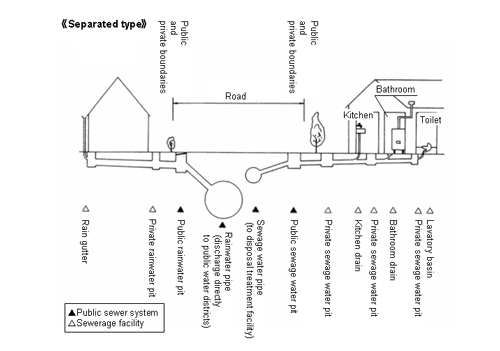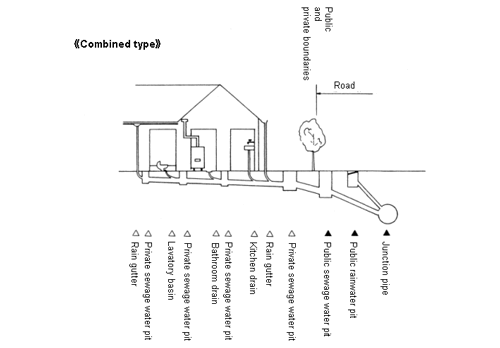- übJapanese topüb
| üESewerage facility | Sewage treatment facility (drain pipe, drain conduits) | |
| Treatment facility (water-treatment facility, sludge treatment facility) | ||
| Supplemental facility (pump facility, etc.) |


Since the sewage water will not be discharged into a public water district during rain, it is an advantage in terms of preventing water contamination. It is economically beneficial in case an existing rainwater exclusion facility is used. However, it will be a disadvantage when such a facility is newly constructed.
The construction is easier compared to the separated type and it is possible to provide a solution for contamination and flooding to a certain level with a single pipe and drain. It is also possible to correspond to nonpoint measures in the case of a small amount of rainfall. When the amount of influent water goes over a certain scale factor on a sunny day, it is structured that the excess influent water (sewage water + rainwater) will be directly discharged into a public water district. (The collected pollutant during fine weather will be extended out at the first period of rainfall and will be cleaned and discharged into public water districts.)
Large cities, such as Tokyo, that have initiated maintenance on their sewer system earlier than others, are situated downstream of rivers. Since it has been an urgent issue to conduct flood prevention and improvements for living environments within the cities, the combined type has been adopted. However, as the sewerage law was revised in 1970, the water preservation of the public water districts has earned a role in the sewer system. Therefore, the separated type has been adopted since that time.